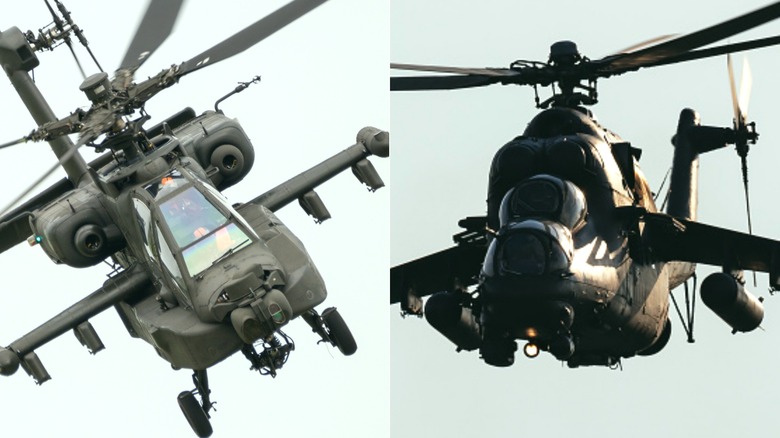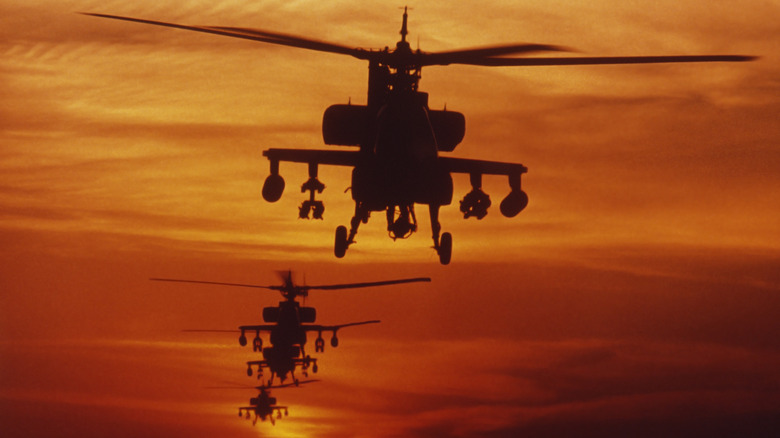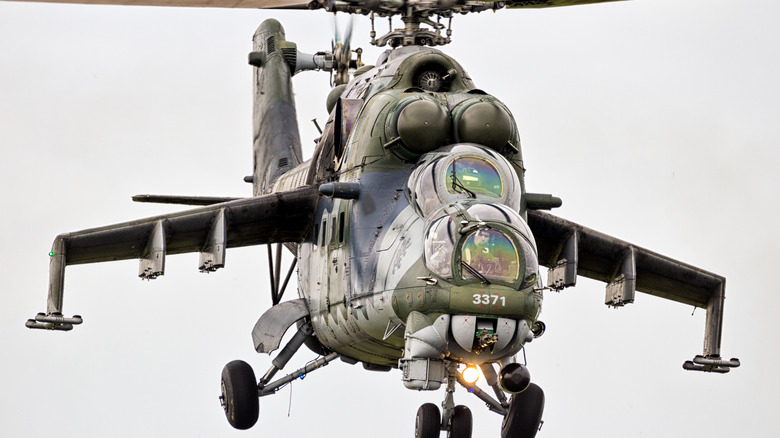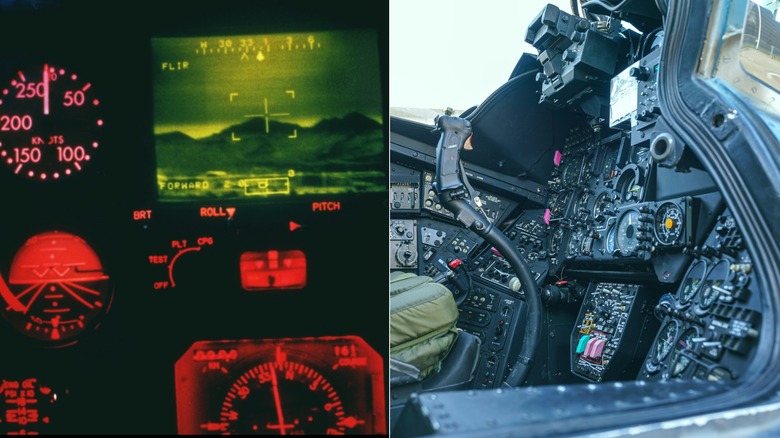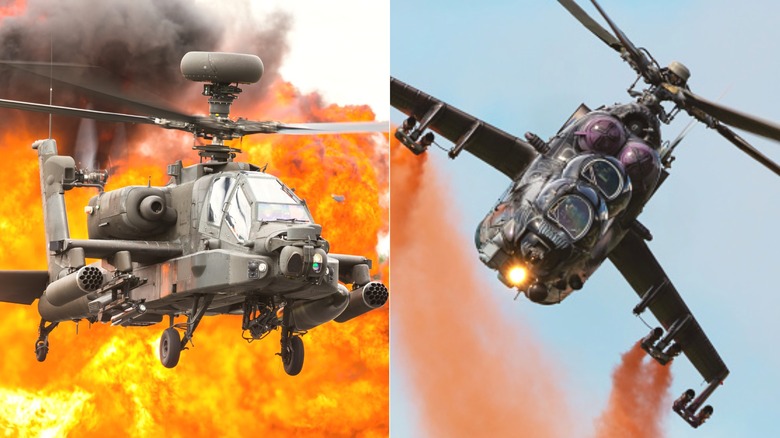AH-64 Apache Vs. Mi-24 Hind: How Do They Compare?
The Cold War between the United States and the Union of Soviet Socialist Republics (USSR) carried on with increased intensity throughout the 1960s. The decade saw the two superpowers come close to nuclear annihilation via the Cuban Missile Crisis, and both nations' militaries turned vehicle development toward helicopters with a specific focus on helicopters that could function as infantry fighting vehicles.
The U.S. developed the AH-64 Apache, a military attack helicopter that replaced the earlier, now retired, AH-1 SuperCobra. The Soviets put together the Mi-24 (NATO reporting name "Hind"), which, like the Apache, remains in service today. Unlike the Apache, Hinds function as both a fire support and infantry transport vehicle. This makes the Hind more capable of accomplishing a variety of missions than its American counterpart, but which is better?
That's not an easily answered question, but comparing the two is possible. By looking at their specs, combat history, and how nations have used them in and out of warfare, it's relatively clear which chopper is the more advanced and successful. Each aircraft entered active military service around the same time, and since the U.S. and Russian Federation still utilize them, it's possible to determine which helicopter rules the skies.
What is the AH-64 Apache?
Hughes Helicopters initially developed the AH-64 Apache in the mid-1970s, with full production commencing in 1982. Its first combat mission saw it fly in support of Operation Just Cause when the U.S. invaded Panama in 1989. As of March 2023, Apaches flew five million hours, including 1.3 million during combat operations, so it's seen heavy use since its introduction.
The Apache remains the primary attack helicopter of the United States and several allied nations. It has received numerous upgrades and modernization enhancements over the years and has an impressive weapons loadout. Apaches commonly carry AGM-114 Hellfire anti-tank missiles, 1,200 rounds of 30mm ammunition, AIM-92 Stinger heat-seeking air-to-air missiles, and Hydra 70 unguided rockets. They can fly up to 227 mph for up to two and a half hours and have a range of 300 miles.
These all add up to a great deal of lethality, and the Apache is a proven killing machine. The latest model, the AH-64E Guardian, incorporates a millimeter wave fire control radar, a Ground Fire Location System, and other technologies that bring the aircraft up to digital modernization standards. Another innovation is the Integrated Helmet and Display Sighting System, which connects the M230 Chain Gun to the helmet, enabling pilots to fire at whatever they look at.
What is the Mi-24 Hind?
The Soviets began developing the Mi-24 Hind in the 1960s, entering active service by 1972. Its first combat operation occurred in 1977 in Ethiopia during the Ogaden War with Somalia, and it's been used in almost every major military operation carried out by the Soviets and Russian Federation ever since. Americans first took note of the Hind during the Soviet-Afghanistan War, where it proved incredibly difficult to shoot down.
The Afghan's difficulty in bringing down Hinds resulted in the U.S. entering the conflict by directly supplying Afghans with Stinger anti-aircraft missiles, which proved effective in combat. Despite this, the Hind has a proven track record in combat operations, functioning primarily as an attack helicopter. While it can carry up to eight fully armed and equipped troops, it was quickly apparent that the Russians rarely used it for this purpose.
While the Hind can carry different loadouts, most are equipped with a Yak-B 12.7mm minigun or two GSh-30K 30mm autocannons. The helicopter's pylons can carry unguided 57mm and S-8 rockets, gun pods containing the UPK-23, and numerous free-fall bombs. Additionally, the outer pylons carry guided anti-tank missiles, making its ordinance comparable to the Apache. While not a standard configuration and rarely used, it can carry R-60M air-to-air missiles.
AH-64 Apache vs. Mi-24 Hind technology and cost comparison
Heavy ordinances make an attack helicopter a formidable weapon system, and both the Apache and Hind have comparable armaments. Both are ideal for targeting armor on the battlefield, can engage other aircraft, and feature advanced technologies that make them ideal combat aircraft in the 21st century. That said, they differ in technological advancements and cost, which are considerations for deploying an aircraft in combat.
The Apache features Lockheed Martin's Modernized Target Acquisition Designation Sight/Pilot Night Vision Sensor, which enhances nighttime and adverse weather operations. Conversely, the Hind features Geofizika ONV1 night-vision goggles coupled with NVG-compatible cockpit lighting. This is outfitted with the Urals Optical and Mechanical Plant GOES-342 TV/FLIR sighting system and a laser rangefinder. Each system effectively accomplishes the same thing.
Regarding cost, the U.S. Department of Defense Comptroller revealed in 2023 that one flight hour for the AH-64E cost $6,440. Older models cost more to operate, but this comparison is between the newest model aircraft currently in operation. Estimates for the cost of the Hind are harder to come by with any definitive proof. Still, given its burn rate of fuel of 1,600 lbs. per hour, lighter unloaded weight compared to the Apache, and likely reduced cost of operation, it's fair to assume the Hind costs less to operate than the Apache.
Which is the better attack helicopter?
Given their comparable ordinance, relatively close size and weight, and extensive use in combat, both helicopters have much in common. In many cases, analyzing the strengths of two helicopters is a thought experiment, but not necessarily in the case of the Apache and Hind. The most widely known instance of a helicopter dogfight occurred during the Iran-Iraq war between Iraqi-operated Mi-24 Hinds and Iranian Army Aviation AH-1J SeaCobras, a variant of the Bell AH-1 SuperCobra. While the SeaCobras aren't the same as Apaches, they were the legacy aircraft the Apache replaced.
Both sides suffered heavy losses during the engagement, but their use in combat changed considerably as a result of the conflict. Iran emerged victorious in that combat action, proving the more agile aircraft's effectiveness outmaneuvered the Hind's heavy armaments. A similar outcome would likely occur should the AH-64 face off against the Mi-24 in a dogfight.
That said, both aircraft have proven themselves in combat, and the only reason the Apache takes the lead is due to the constant modernization efforts put into its continued operations. While the Mi-24 has received upgrades over the years, it lacks a standardized air-to-air missile, which the Apache carries, and the Hind typically does not. Put them together in combat, and the Apache can shoot down a Hind from further than its heavy guns can fire, making it the superior of the two aircraft.
